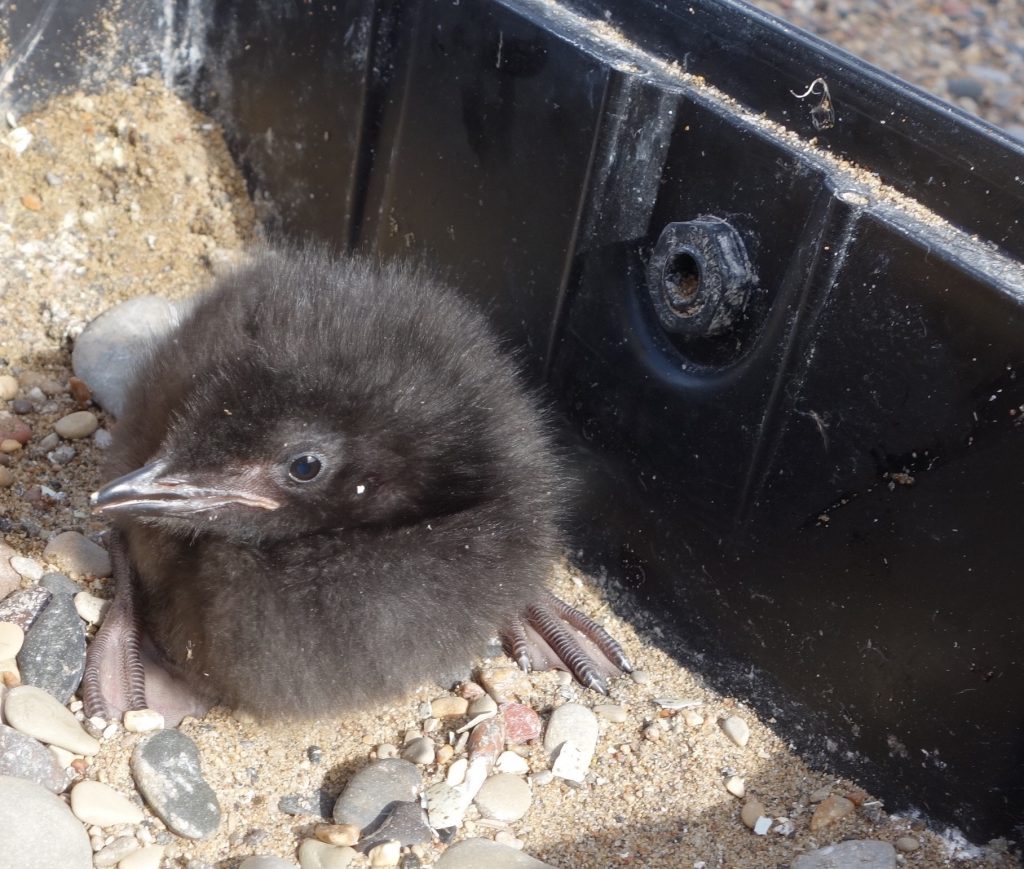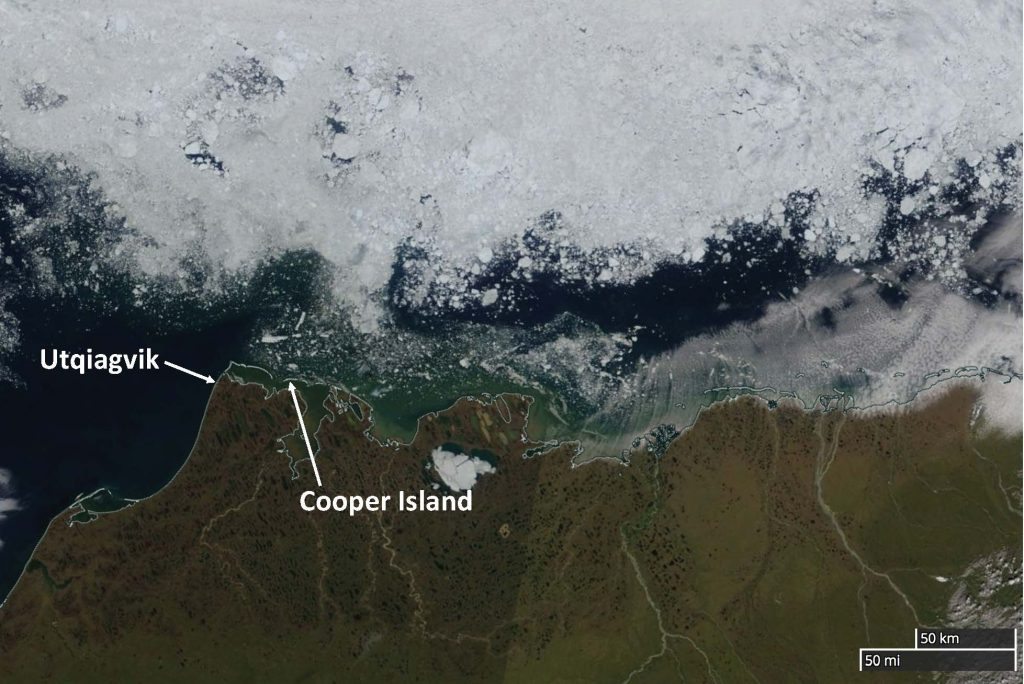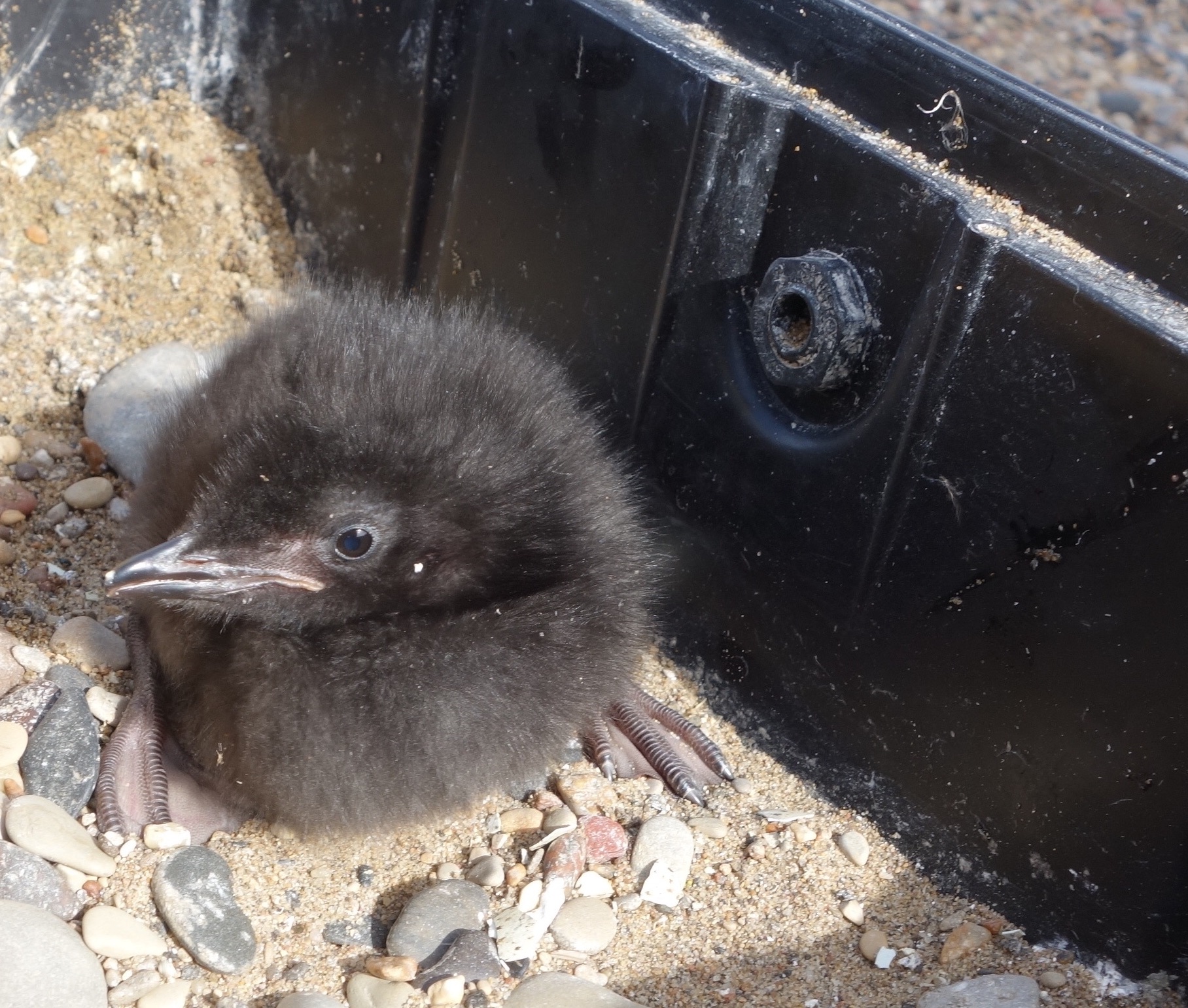
This improbable 2020 field season is finishing its second week. As I anticipated, being back in Utqiagvik and heading out to Cooper Island helped make this bizarre year feel a little more normal. But once on the island, my initial census of the colony quickly reminded me that, while the entire world is focused on the disruptions and dangers of the pandemic, the repercussions of a melting Arctic continue – as they have for the majority of the 47-year Cooper Island study.
In the late 1980s the Mandt’s Black Guillemot colony on Cooper Island had over 200 breeding pairs, thanks to nest sites we provided in the 1970s and 1980s. The number of breeding pairs began to decline in the 1990s with gradual decreases in the sea ice on which the species depends. In this century, major declines in sea ice – and in the availability of the guillemots’ ice-associated prey – further reduced numbers and has continued to decrease the colony’s breeding success.
We did not see large scale nonbreeding and egg neglect at the colony until 2018 when, after record low sea ice in the winter of 2017-18, two-thirds of the 75 pairs in the colony did not lay or did not incubate eggs – essentially reducing the colony to 25 breeding pairs. This colony-wide lack of breeding effort for seabirds is rare, symptomatic of a major reduction in an ecosystem’s ability to sustain a previously supported population, such as occurs at colonies periodically affected by El Nino.
In 2020 the Cooper Island colony has again experienced widespread nonbreeding and egg neglect and a reduction in number of pairs. The 65 pairs present in the colony this year is the lowest number since the early 1980s. Of those pairs, only 33 laid eggs, with only 18 pairs incubating. This essentially reduces the colony to less than 20 functional breeding pairs – similar to the size of the colony when I began the study in 1975.
While this year’s findings are depressing, they are not unexpected. Mandt’s Black Guillemot is one of the few Arctic seabirds dependent on sea ice throughout the year and the reduction of Arctic sea ice has been pronounced and one of the most obvious indicators of global warming. Arctic sea ice is currently at a record low for this time of year and the increasing atmospheric CO2 levels causing the earth’s warming are higher than they have been in 3 to 5 million years.
The signs that the Arctic is in trouble have been evident for at least three decades. The annual monitoring of the Cooper Island colony has gone from being something enjoyable, as when the colony grew and prospered early on, to now being something that is necessary, to document the continuing decline of a seabird and the marine ecosystem on which that seabird depends.

Given the state of the colony – and the state of the world right now – the discovery of the first guillemot nestlings last week buoyed my spirits more than usual. Luckily for the current 20+ nestlings, sea ice has remained relatively close to the island this summer, even through a major Arctic cyclone earlier this week, and parent birds are able to find the ice-associated Arctic Cod that is their preferred prey. The weight gains of the chicks over the past week provide hope that the 2020 season could end with high breeding success for the few pairs that were able to breed this year. Focusing on the success of individual nestlings helps to maintain one’s spirits during a period when the state of the colony can be disheartening.
